Hey there, colleague! What follows is a mini-lesson that teaches secondary students how to learn more effectively. It's part of a series, which you can access right here. When we teach students about learning, we empower them to work smarter and get better results for their effort. This is massively important for cultivating the five key beliefs beneath student motivation.
Without further ado — here's today's post! -DSJR
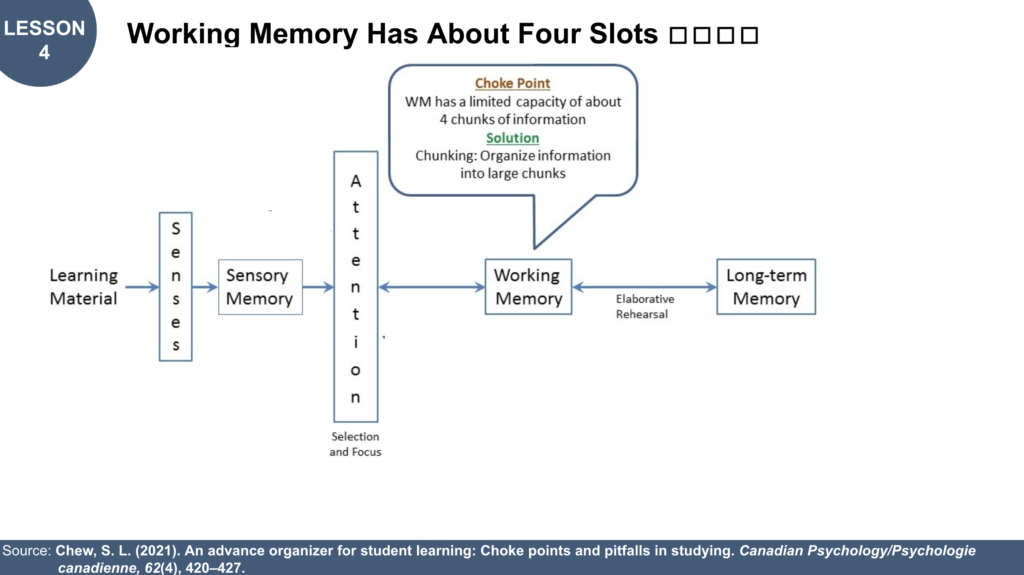
Alllll right students — who's ready for some solid learning about learning? I am so ready. So ready. Let's go.
As you get out your notes from yesterday, please review with your partner — what are the four bottlenecks to learning that ALL humans have to grapple with?
Thank you for really going for that. I heard a lot of groups getting them fairly quickly. Let me call on a few of you. We've got to deal with the bottlenecks of:
- Attention is narrow
- Concentration is hard
- Working memory is limited
- We forget stuff
All right — today we're going to talk about something that is maybe the most amazing thing I've ever learned about how our minds work: the hackable limitations of working memory. Let's write down: Bottleneck — WM has a limited capacity of about 4 chunks of information.

So let me give you a little memory quiz to help you understand the day's bottleneck. This example comes from Dan Willingham, that cognitive science researcher at UVA. Here you go, here are the instructions:
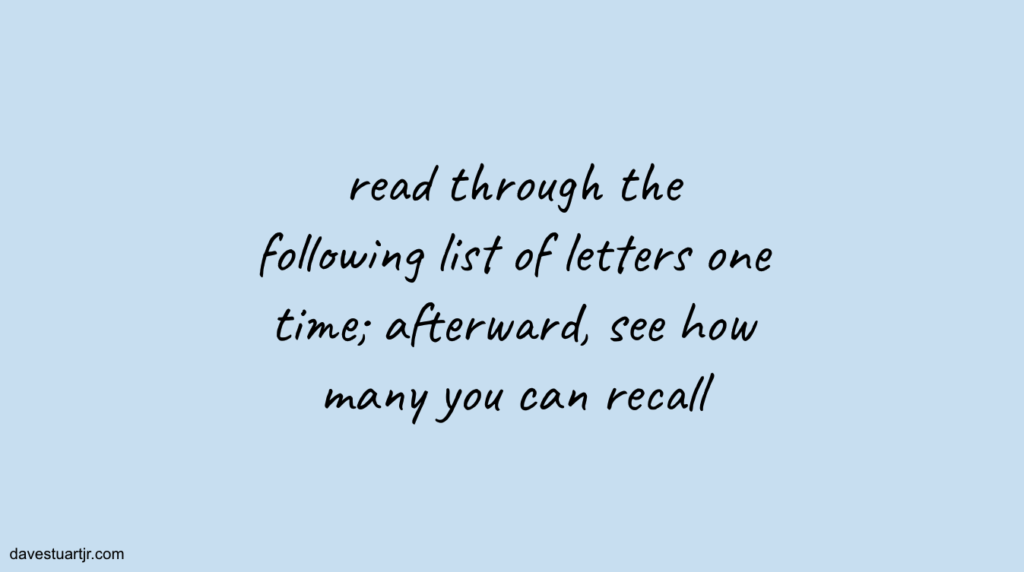
Ready? Here's the list. I'm going to show it to you for 15 seconds:

All right — quick, on a scrap somewhere, try to write down all the letters you can remember.

Who got all of them? Nobody?
Me neither.
Here are a few things cognitive science is pretty settled on:
- We forget stuff that we're just encountering REALLY quickly
- No matter how hard we try
- And the only way to fix this is by CHUNKING
Let me just show you, and then I'll explain what I mean.


Easier, right?
Why? Why was it easier? It was the same number of letters. I mean heck, they were even in the same order!
Look:
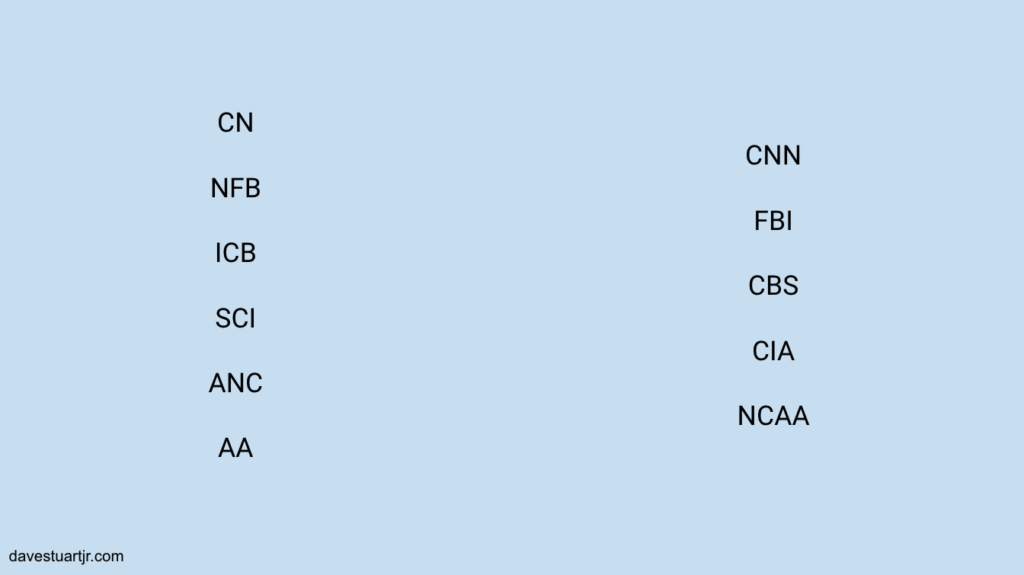
So, what was the difference?
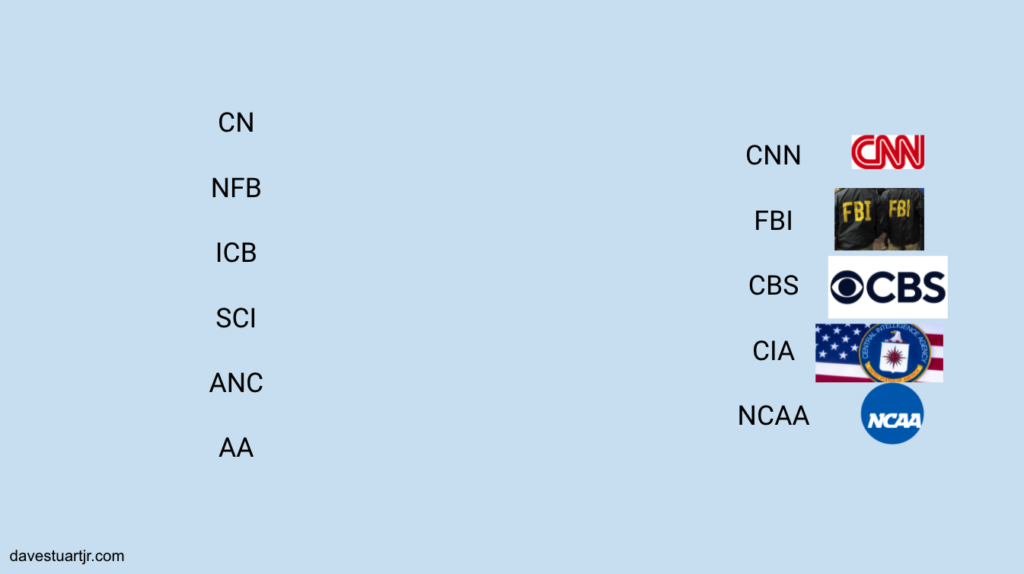
Exactly. That list on the right there is more than random letters; some of those mean something to you, don't they?
All right, so let's look at what's going on.
Head back to that list we made a couple days ago of Bottlenecks and Pitfalls. It looks like this:
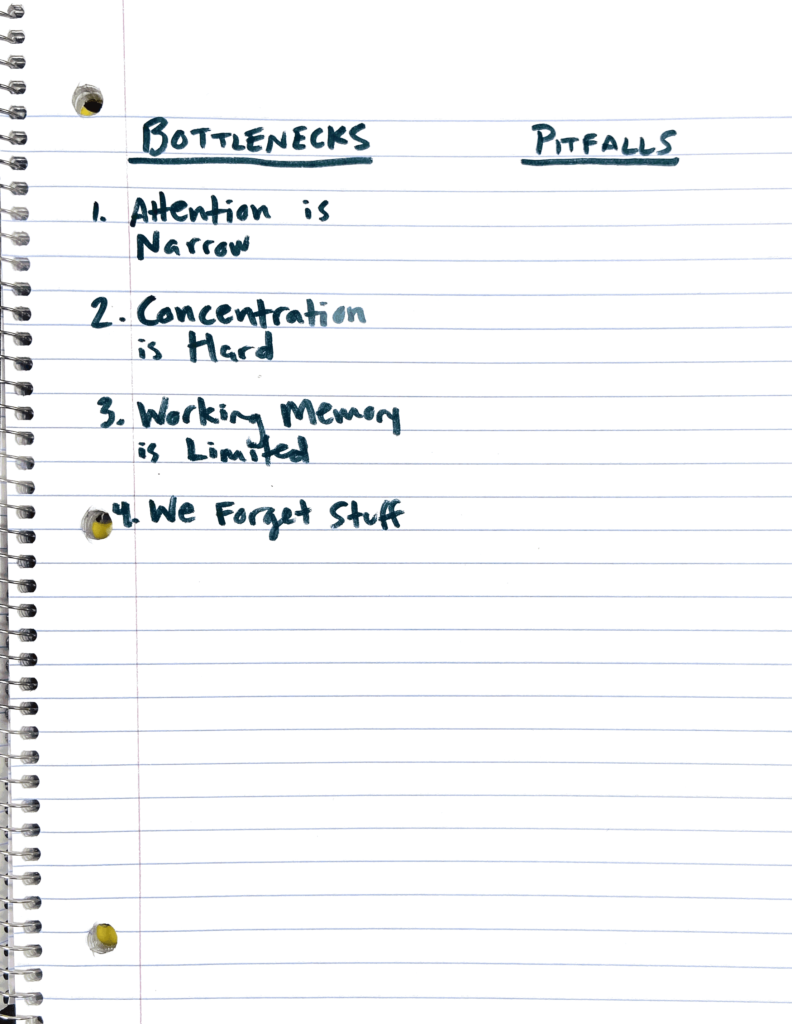
Let's add a definition here. Working Memory is like a sticky note in the brain — it holds what we're able to think about at any one time, BUT it's got limited room on it!
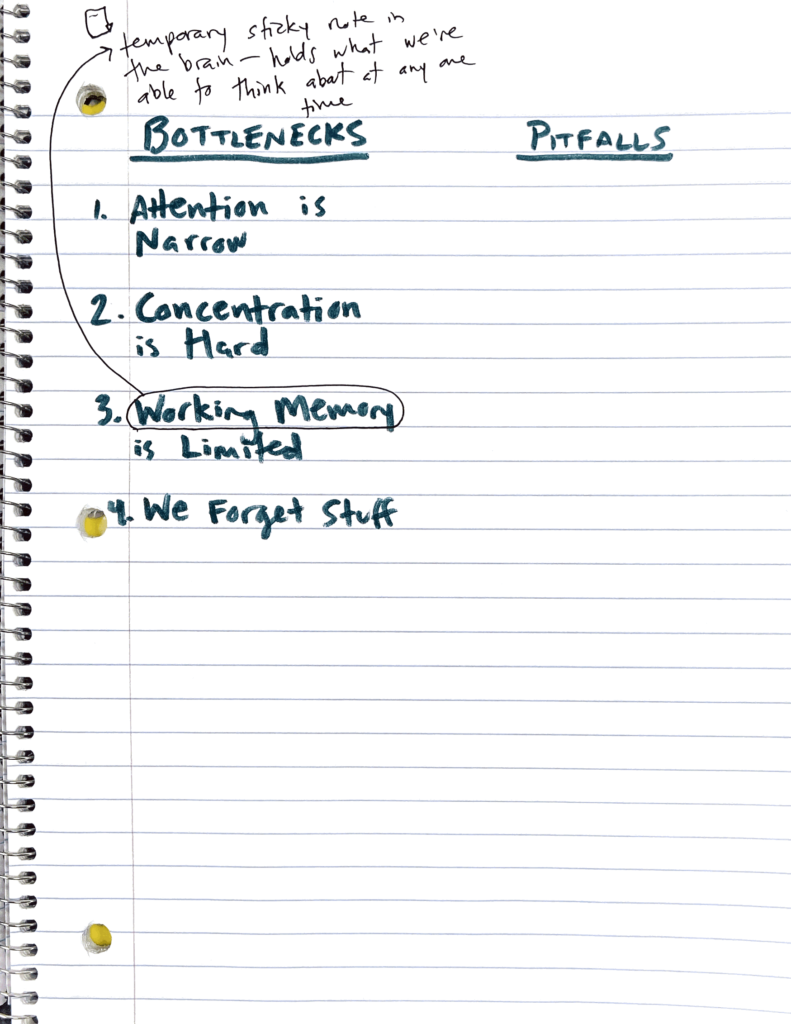
So the trouble with that sticky note of ours — today's bottleneck — is that it's only so big. Psychologists have done about a bajillion studies on this, and even professional memorizers — people who can do things like memorize the whole order of a shuffled deck of cards by looking through it one day — only have about four slots of working memory to work with.
I just want you to think about that. It's crazy!
But the thing is, those slots can be filled with massive chunks of information — like when you saw CNN and FBI and CBS and CIA and NCAA, you're brain might've turned that into just three chunks: news stations, government organizations, and sports. And now, all of a sudden memorizing 16 random letters became a piece of cake — BECAUSE you chunked.
Let's write in the solution and then talk a bit more about what makes this our toughest bottleneck yet:
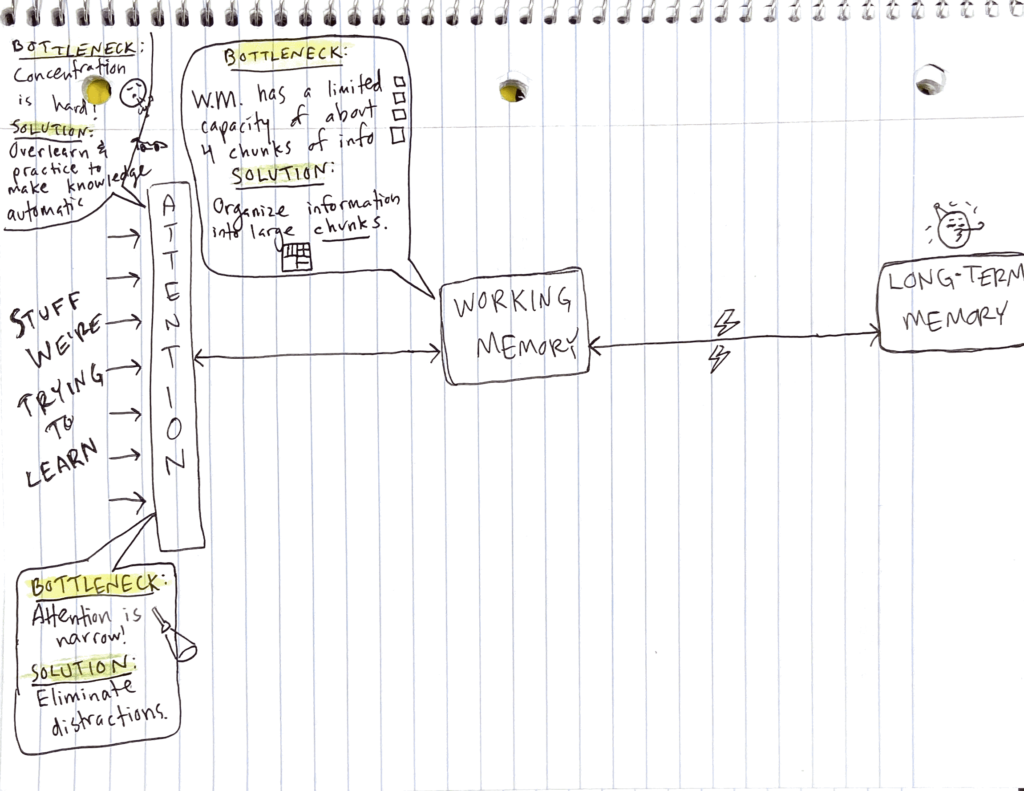
So, here's the problem with chunking: the less you know about a topic, the harder it is to know how to chunk. For example, if you don't know anything about African history, and I give you a lesson where you read a textbook excerpt about decolonization in five different African states, you're going to be overwhelmed pretty quickly — it's alllll going to be new, and you're going to have a hard time making sense of all the new information coming your way.
In one of his videos, Dr. Chew likens it to how, in college, the introductory classes are often harder than the more advanced classes because in advanced classes you've got the background knowledge that makes chunking new information a lot more natural.
So look: we're not going to solve for this solution yet today. We're going to have to diver deeper into how we learn.
More on that tomorrow.
Note from Dave: This article is part of a series of mini-lessons designed to improve student motivation by cultivating the Effort and Efficacy beliefs. More on the series here; more on the idea of the five key beliefs here.
KimS says
Cool swimming video. Don’t think that is the right link to Dr. Chew’s video.
Dave Stuart Jr. says
ahh! You are right — that IS a cool video and it’s NOT Dr. Chew. I just fixed it — here’s the correct link: https://youtu.be/XOKG2LrnwYo